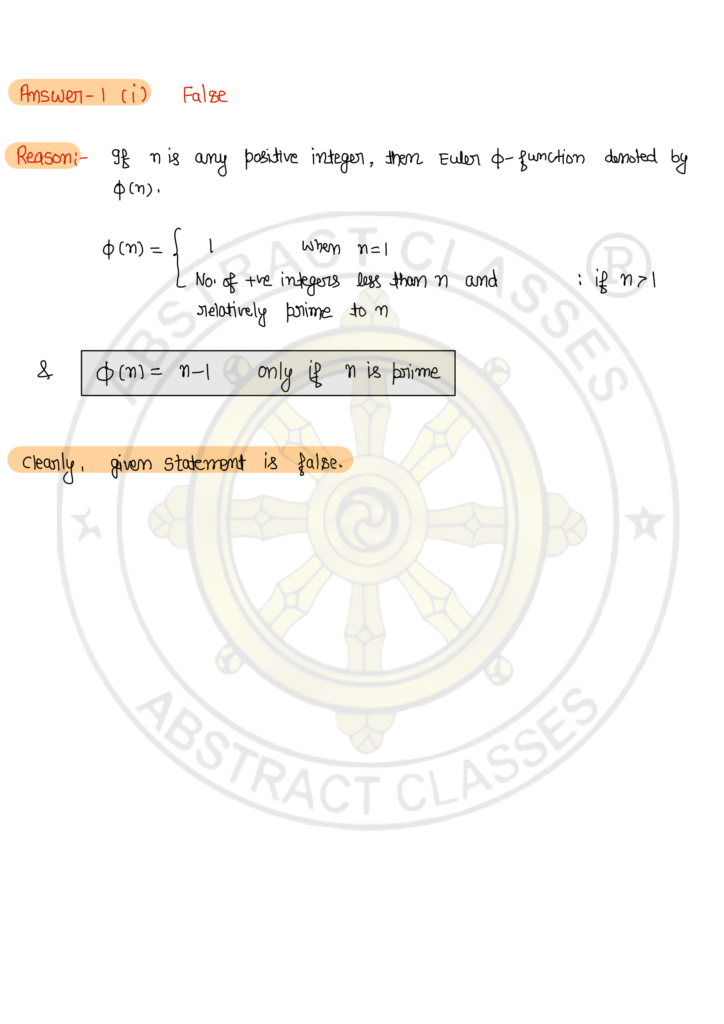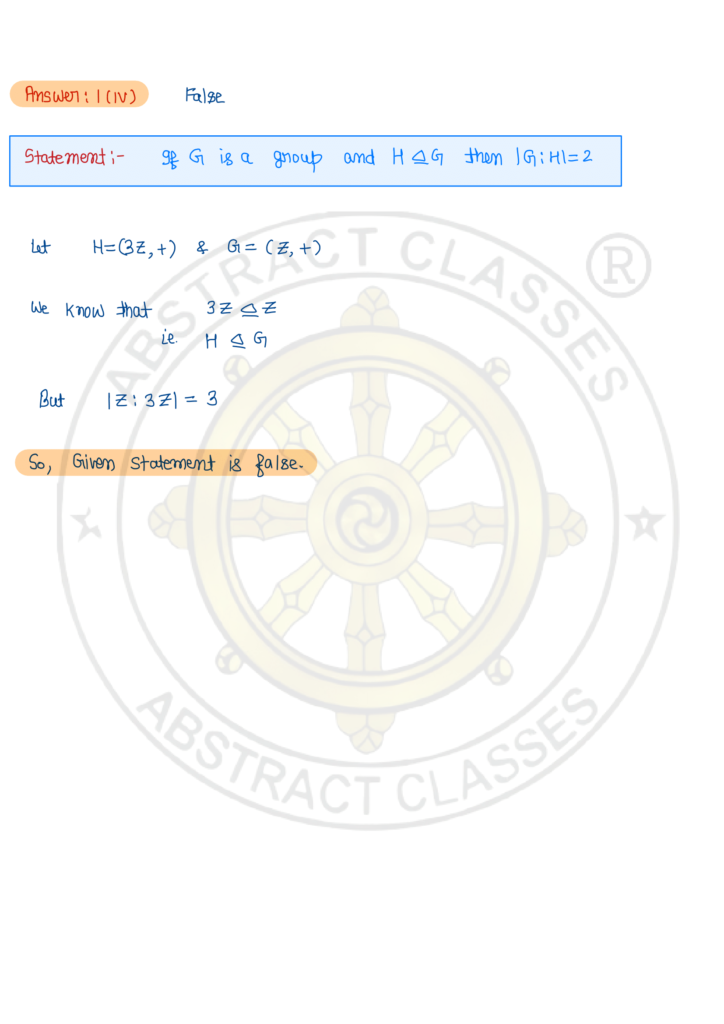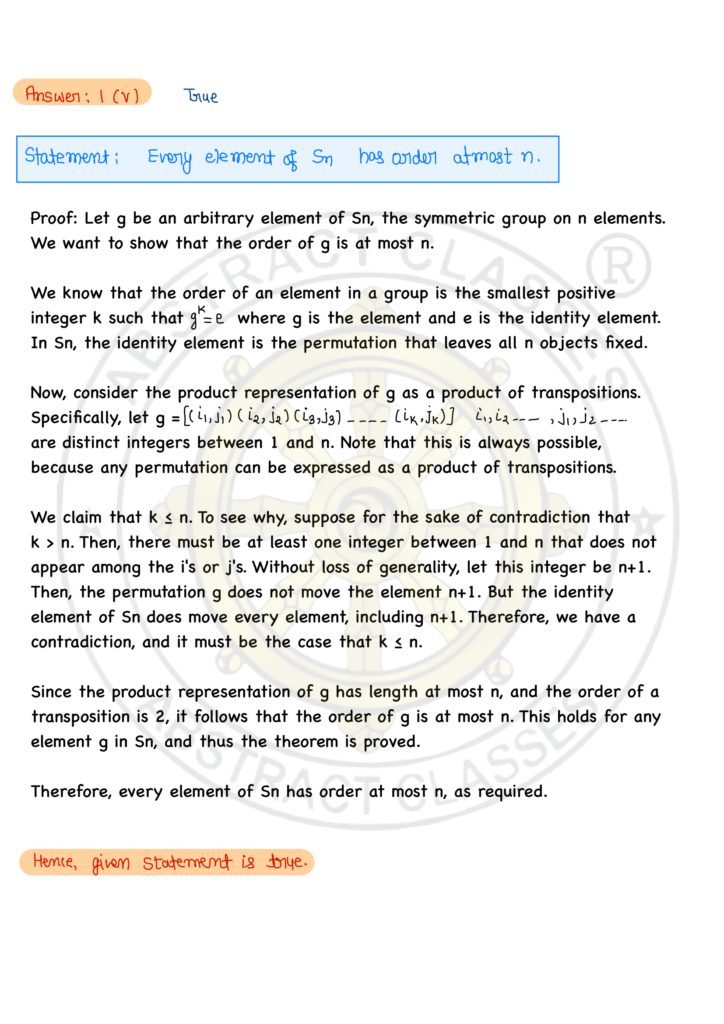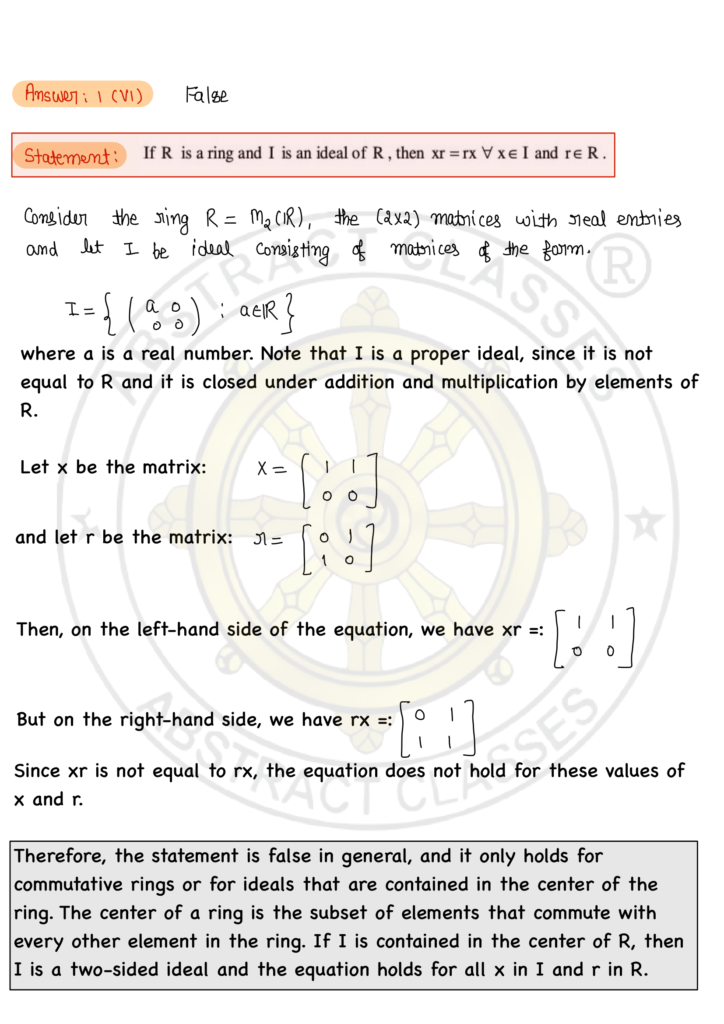Sample Solution
1. Which of the following statements are true? Justify your answers. (This means that if you think a statement is false, give a short proof or an example that shows it is false. If it is true, give a short proof for saying so.)
i) \(\phi(\mathrm{n})=\mathrm{n}-1 \forall \mathrm{n} \in \mathbb{N}\), where \(\phi\) is the Euler-phi function.
Solution

ii) If \(G_{1}\) and \(G_{2}\) are groups, and \(\mathrm{f}: \mathrm{G}_{1} \rightarrow \mathrm{G}_{2}\) is a group homomorphism, then \(\mathrm{o}\left(\mathrm{G}_{1}\right)=\mathrm{o}\left(\mathrm{G}_{2}\right)\).
Solution

iii) If \(G\) is an abelian group, then \(G\) is cyclic.
Solution

iv) If \(\mathrm{G}\) is a group and \(H \Delta \mathrm{G}\), then \(|\mathrm{G}: \mathrm{H}|=2\).
Solution

v) Every element of \(S_{n}\) has order at most \(n\).
Solution

vi) If \(\mathrm{R}\) is a ring and \(\mathrm{I}\) is an ideal of \(\mathrm{R}\), then \(\mathrm{xr}=\mathrm{rx} \forall \mathrm{x} \in \mathrm{I}\) and \(\mathrm{r} \in \mathrm{R}\).
Solution
